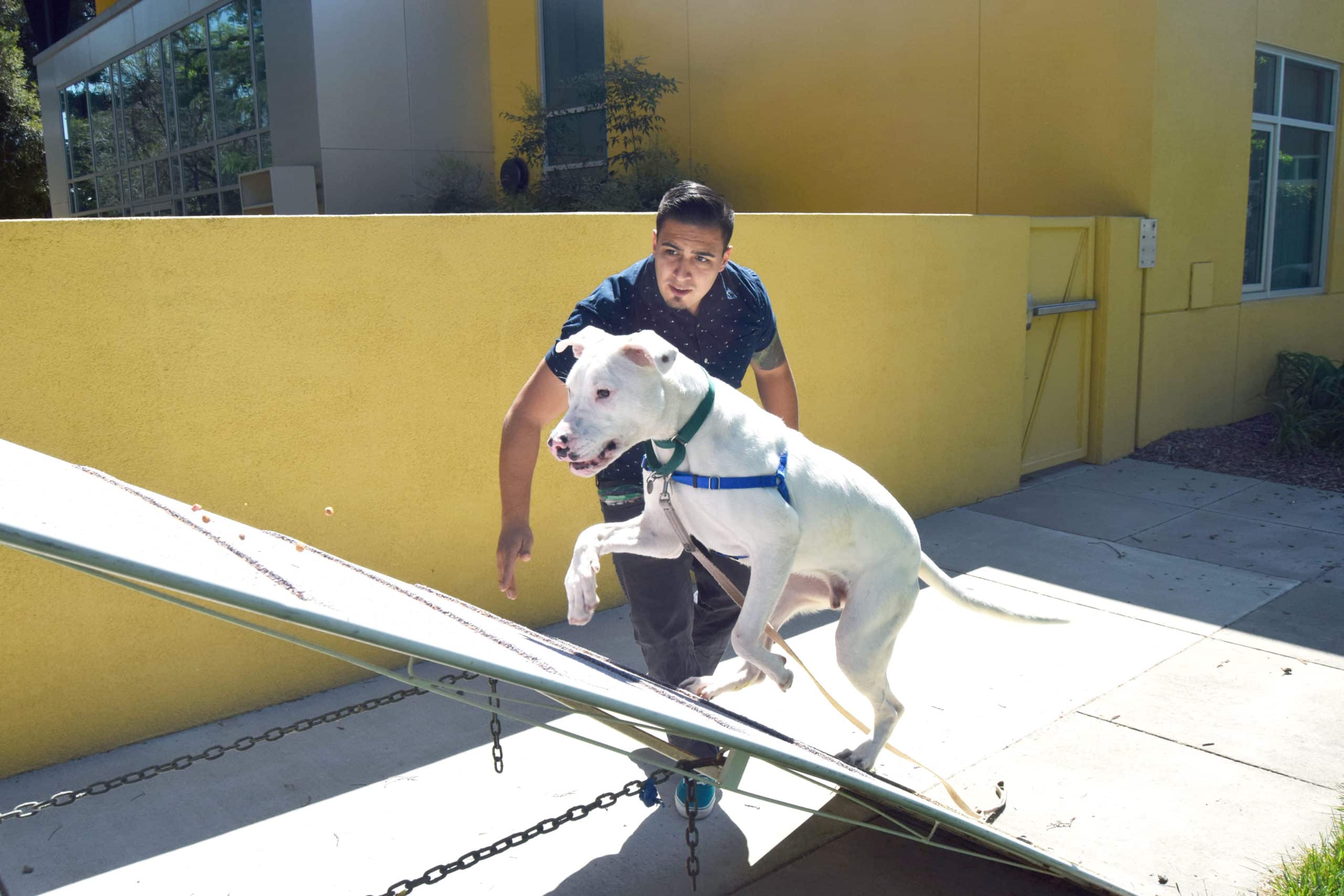
Training your dog to love hanging out in their crate is an excellent way to manage lots of nuisance behaviors like house-soiling or chewing inappropriate objects. It is also very useful when needed for travel or in an emergency.
Choosing Your Crate
Wire or plastic crates are better than soft sided crates during the training phase. A crate should be large enough for your dog to stand up, turn around and stretch out / lie down comfortably but not so large that they can eliminate on one end and sleep on the other. Potty accidents inside the crate can generally be blamed on the crate being too large. Once you’ve selected your dog’s new crate, feel free to furnish it with comfy bedding and chew toys.
First Steps
Do not shut your dog in their crate right away. At first just leave the door open and randomly drop treats in the back throughout the day for them to discover. You may also choose to feed your dog their regular meals inside the crate, while leaving the door open. Once your dog is readily going in and out, let them sniff a tasty treat and let them see you toss it in the back. Do not close the door, but as long as they stay in the crate give them a treat flow of one treat per second (use small treats). Just toss the treats on the floor of the crate for them to sniff around and find. Allow them to exit at will, but if they do just stop the treat flow. Think of this game like turning on the faucet. When your dog is in the crate, the ‘treat faucet’ is on and when they step out of the crate, the faucet turns off.
Intermediate Steps
Gesture toward the crate and then toss a treat in. When your dog goes in the crate, close the door halfway, then feed them a treat and open the door again. Always allow them to exit. Repeat this step at least 10 times. If your dog begins to hesitate to enter or rush out of the crate, try touching the door instead of attempting to move the door closed. Some dogs need a little more time in this phase before being comfortable seeing the door move. Once your dog remains in the crate, with a calm posture while you touch or move the crate door, then move on to the next step.
You might have noticed your dog beginning to enter the crate before you’ve treat is tossed. This is great, since part of our next steps are putting entering the crate on a cue. Now you are ready to gesture to the crate and pause for a moment, gesture once and hold your cue out. If after a couple of seconds your dog hasn’t entered the crate, use a treat toss, to encourage them to go into the crate.
Talk with your veterinarian ahead of time if your animal is prone to anxiety. If you are leaving town, be sure to alert your pet-sitter of your animal’s possible anxiety and give him/her directions accordingly.
Once the dog enters, close the door completely, feed a treat through the crate and immediately open the door again. Repeat ten times. Then begin waiting two-ten seconds before giving the treat while the door is closed. Vary the timing but always open the door after feeding the treat.
Getting Solid
Signal your dog to their crate and once they’re inside give them a KONG stuffed with food (or peanut butter) or a very special chew your dog doesn’t usually get. Close the door and hang out near the crate while reading or watching television. Drop in an extra treat about every 30 seconds and open the door after 10 minutes.
Repeat the previous step but occasionally leave the room for a few seconds. Then repeat this process on another day and open the door after 30 minutes.
Now you may begin varying your absences from five seconds to five minutes and give extra treats about every five-ten minutes. Open the crate after one hour.
Finally, build up the amount of time your dog is in the crate slowly to three hours. Vary your absences and the time spent in the crate.
Keeping the Crate Faith
It’s important to help your dog keep a healthy relationship with the crate by maintaining their trust that they are in a safe space and that they’re going to get out fairly soon. Here are a few more tips to help with this:
- Try to make sure that your dog is getting new and interesting items in their crate. You’ll want to be sure they have access to one or more appropriate chewing or licking items to help encourage them to relax. If they are not interested in the toy options, try slathering them with something tasty, like canned food, dog-safe peanut butter, cream cheese or baby food. Once they begin to lick the item they’ll likely move on to chewing, which is a soothing activity for dogs.
- Do your best to let your dog out before they begin to show signs of anxiety. If you notice they’re beginning to squirm or appear restless, it’s best to let them out then, rather than wait until they display bigger signs of stress, like barking or pacing.
- Some dogs prefer to rest in quiet spaces in the home, others in spaces where they can see the action. Audition what might be best for your dog.
- Keep crate time variable. If the schedule is extremely consistent, your dog may stress more on a day when things aren’t exact. There’s nothing wrong with a little inconsistency, as long as you’re staying within the range that your dog is comfortable.
- Using a camera, laptop or cell phone to check in on your dog might be helpful during the beginning stages of crate training while you’re learning how long their comfort range is.



